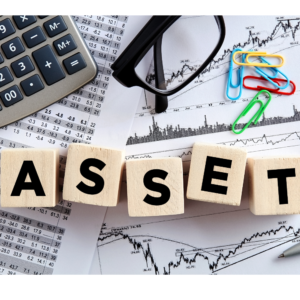In the rapidly evolving digital landscape, businesses of all sizes are increasingly reliant on information technology (IT) to drive growth, innovation, and competitive advantage. However, with the proliferation of IT assets—including hardware, software, and related services—organizations face the daunting task of effectively managing these resources. IT Asset Management (ITAM) emerges as a critical discipline that provides a structured approach to managing IT assets throughout their lifecycle. In this post, we will delve into the myriad benefits of implementing ITAM practices and how they contribute to overall business efficiency.
Understanding ITAM
IT Asset Management is a set of business practices that incorporates IT assets across the business units within the organization. It involves the management of the IT hardware, software, and information systems from procurement to disposal. ITAM aims to optimize the use of IT assets, reduce costs, improve operational efficiency, and ensure compliance with licenses and regulations.
The Benefits of IT Asset Management (ITAM) for Business Efficiency
1. Cost Savings and Financial Optimization
One of the most tangible benefits of ITAM is the potential for significant cost savings. By maintaining an accurate inventory of IT assets, businesses can avoid unnecessary purchases, identify underutilized resources, and streamline their IT environment. ITAM helps in negotiating better vendor contracts and identifying opportunities for bulk purchasing or volume discounts. Additionally, a well-implemented ITAM strategy can reduce the risks of financial penalties associated with non-compliance with software licenses.
2. Enhanced Decision Making
With comprehensive ITAM data, executives and IT managers are equipped with the information needed to make informed decisions. ITAM provides insights into the lifecycle of assets, which can inform procurement strategies, budgeting, and forecasting. This visibility allows for proactive planning, ensuring that IT resources align with the organization’s long-term goals and objectives.
3. Improved IT Service Management
ITAM integrates closely with IT Service Management (ITSM) processes. The accurate and up-to-date information about IT assets provided by ITAM enables better service delivery and support. ITAM data can be used to resolve incidents and problems more quickly, as support teams have access to detailed asset information. This leads to improved service levels and a better user experience.
4. Risk Management and Compliance
Organizations face a multitude of regulations and standards that dictate how IT assets should be managed. ITAM helps ensure compliance with software licenses, warranties, and regulatory requirements, reducing the risk of legal and financial repercussions. Furthermore, ITAM supports risk management by providing insights into the security vulnerabilities associated with IT assets, enabling organizations to take preventative measures.
5. Strategic Asset Utilization
ITAM facilitates the strategic use of IT assets by providing a clear picture of asset performance, usage patterns, and interdependencies. This information aids in identifying opportunities for consolidation, virtualization, or cloud migration, which can lead to more efficient resource utilization and potentially lower operational costs.
6. (ITAM) Lifecycle Management and Disposal
A robust ITAM program encompasses the entire lifecycle of an IT asset, from acquisition to disposal. By managing assets through their full lifecycle, businesses can ensure that they are retired and disposed of in a secure and environmentally responsible manner. Proper disposal also mitigates the risk of data breaches that could occur if sensitive information is not adequately erased from decommissioned assets.
7. Enhanced Productivity and Innovation
With a streamlined IT asset base, employees have access to the tools and information they need to perform their roles effectively. This can lead to increased productivity and a more agile workforce capable of responding to changing business needs. Moreover, ITAM can free up IT staff from administrative tasks, allowing them to focus on strategic initiatives and innovation.
Conclusion
IT Asset Management is no longer an optional luxury but a necessity for businesses seeking to thrive in the digital age. By implementing ITAM best practices, organizations can reap significant benefits that extend beyond cost savings to improved decision-making, risk management, and business agility. As IT environments continue to grow in complexity, investing in ITAM can provide a strategic advantage, ensuring that IT assets are leveraged to their fullest potential for driving business efficiency and success.
In summary, ITAM is a cornerstone of modern business strategy, providing a framework for managing IT assets that is essential for operational excellence and long-term sustainability. As businesses continue to navigate the challenges of the digital economy, ITAM will play an increasingly vital role in enabling them to stay ahead of the curve.

